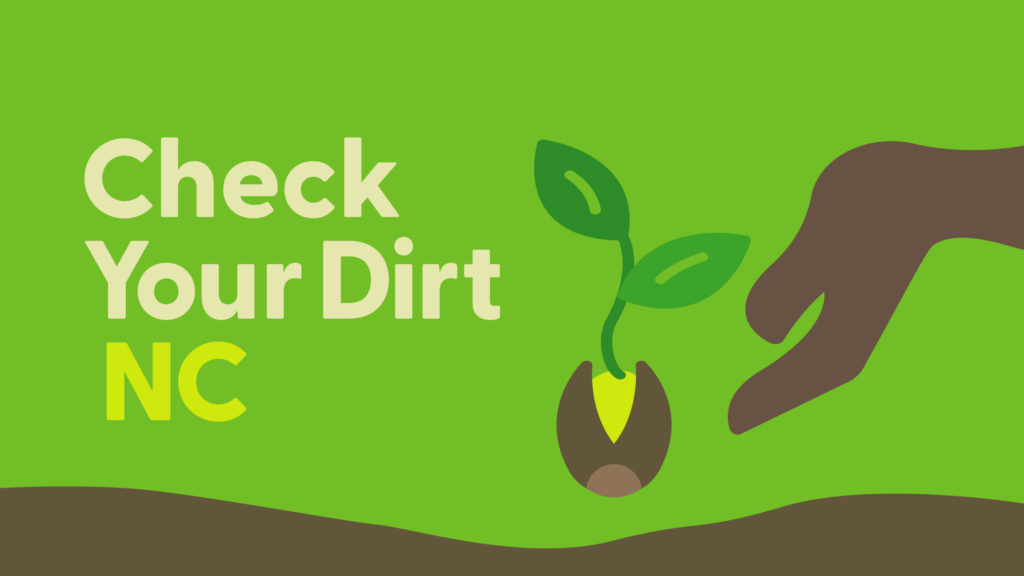Check Your Dirt NC!
go.ncsu.edu/readext?831750
en Español / em Português
El inglés es el idioma de control de esta página. En la medida en que haya algún conflicto entre la traducción al inglés y la traducción, el inglés prevalece.
Al hacer clic en el enlace de traducción se activa un servicio de traducción gratuito para convertir la página al español. Al igual que con cualquier traducción por Internet, la conversión no es sensible al contexto y puede que no traduzca el texto en su significado original. NC State Extension no garantiza la exactitud del texto traducido. Por favor, tenga en cuenta que algunas aplicaciones y/o servicios pueden no funcionar como se espera cuando se traducen.
Português
Inglês é o idioma de controle desta página. Na medida que haja algum conflito entre o texto original em Inglês e a tradução, o Inglês prevalece.
Ao clicar no link de tradução, um serviço gratuito de tradução será ativado para converter a página para o Português. Como em qualquer tradução pela internet, a conversão não é sensivel ao contexto e pode não ocorrer a tradução para o significado orginal. O serviço de Extensão da Carolina do Norte (NC State Extension) não garante a exatidão do texto traduzido. Por favor, observe que algumas funções ou serviços podem não funcionar como esperado após a tradução.
English
English is the controlling language of this page. To the extent there is any conflict between the English text and the translation, English controls.
Clicking on the translation link activates a free translation service to convert the page to Spanish. As with any Internet translation, the conversion is not context-sensitive and may not translate the text to its original meaning. NC State Extension does not guarantee the accuracy of the translated text. Please note that some applications and/or services may not function as expected when translated.
Collapse ▲ This informative survey is for gardeners in North Carolina who want to:
This informative survey is for gardeners in North Carolina who want to:
- Learn about the types and sources of soil chemical contaminants that might be found in and around their own garden site, community gardens, and school gardens
- Evaluate relative risks and gardening practices that decrease the risk of exposure to soil contaminants
- Find resources to test for soil contaminants in the garden.
The information you provide about your garden will help identify potential risks of soil contaminants in your garden and provide advice about how to keep yourself and other gardeners safe while gardening and eating food grown in the garden. We’ll ask you in what county your garden is located, the history of the site, how your garden is managed, and who gardens.
RED Answers indicate factors that can increase the risk of exposure to contaminants in the garden.
GREEN Answers are factors that can reduce the risk of exposure.
When you complete the survey a report is generated with your results and other useful information that you can keep!
If you have any difficulty answering the questions, your local Extension office/agent may be able to help.
To encourage others to take the survey share the link



